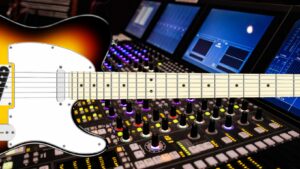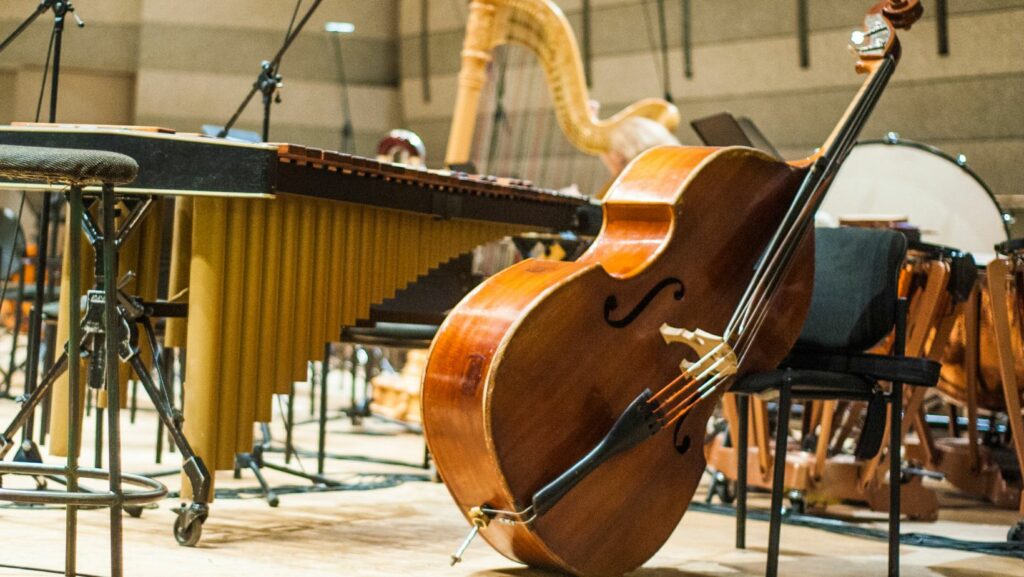From vinyl records to streaming services, technology’s influence on music is undeniable. It’s reshaped not only how we listen, but also how music is produced and distributed. But what’s the depth of this impact, and what does it mean for both artists and fans?
In this digital era, music has become more accessible, diverse, and innovative. Yet, it’s also sparked debates around issues like authenticity and artist compensation. This article will delve into these fascinating changes, exploring the intricate dance between music and technology.
Stay tuned as we embark on this rhythmic journey, examining how technology has tuned the music industry’s strings and composed a new symphony of sound.
How has Music Changed With The Use of Technology?
 Music production has experienced a series of transformations due to the integration of technology. Innovations have altered how music is created, manipulated, and even consumed. The following subsections delve deep into this evolution from analog to digital composition and the impact of music editing software.
Music production has experienced a series of transformations due to the integration of technology. Innovations have altered how music is created, manipulated, and even consumed. The following subsections delve deep into this evolution from analog to digital composition and the impact of music editing software.
In the realm of music production, the shift from analog to digital has been groundbreaking. Traditional analog methods encompassed tape machines, vinyl records, and wired soundboards. However, analog systems, while renowned for their warmth and quality, posed several setbacks. They required extensive physical space, were compoundingly expensive, and necessitated a degree of technical know-how.
The inception of digital systems turned these obstacles on their head. Initially, digital formats like Compact Discs (CDs) disregarded the need for bulky vinyl records, simplifying storage and distribution. Furthermore, Digital Audio Workstations (DAWs) began to emulate the capabilities of entire studios within laptops, democratizing music creation. As an example, Garageband, a popular DAW, offers instruments and recording capabilities virtually, thus making music production accessible to anyone with a computer.
Beyond production, technology has also significantly impacted music performance and even artist attire. The advent of electronic instruments, synthesizers, and digital effects processors has allowed musicians to create entirely new soundscapes and performance styles. Live performances have become increasingly elaborate, incorporating synchronized lighting, video projections, and other visual elements, often controlled by sophisticated computer systems. This technological integration has influenced stage presence and attire as well. Artists performing electronic music or heavily utilizing technology in their shows often adopt visually striking outfits that complement the technological spectacle. In contrast, the ease of recording and distributing music digitally has also led to a rise in more intimate, stripped-down performances, where the focus is solely on the music and the artist’s raw talent, often reflected in more casual attire.
The Rise of Music Editing Software
 In the wake of the digital revolution, the development and adoption of music editing software have soared. These programs have vastly expanded the creative potential of artists and producers.
In the wake of the digital revolution, the development and adoption of music editing software have soared. These programs have vastly expanded the creative potential of artists and producers.
Firstly, editing software allows unprecedented manipulation of sound. Features like pitch correction, time-stretching, and synthesis have empowered musicians, granting them control over every facet of their sound. Autotune, as a case in point, has become an essential tool in modern production, initially gaining fame through artists like Cher and T-Pain.
Secondly, music editing software also optimizes the process of music creation. Features permitting looping and sequence programming alleviate the necessity for musicians to play their parts perfectly during every take. As a demonstration of this, the Drum Machine, integrated in several DAWs like Ableton Live, provides beat programming capabilities which make constructing complex rhythm sections effortless.
As technology continues to evolve and enhance music production, the creative horizons for artists are expanding too. It is a testament to the immense potential and adaptability of both music and technology.
Impact of Streaming Services
 Technological innovations have led to the evolution of music distribution channels. Initially, music distribution mainly involved physical formats like cassette tapes and CDs. The rise of the internet, however, ushered in a new era of digital distribution, further supplemented by the advent of music streaming platforms.
Technological innovations have led to the evolution of music distribution channels. Initially, music distribution mainly involved physical formats like cassette tapes and CDs. The rise of the internet, however, ushered in a new era of digital distribution, further supplemented by the advent of music streaming platforms.
Streaming, a digital technology trend, has changed the music industry’s traditional distribution model. Services like Spotify, Apple Music, and Amazon Music provide platforms where users can access millions of songs on demand. Casual listeners and aficionados alike benefit from discovering an infinite variety of genres, artists, and albums. With a swipe, one can switch from pop melodies synonymous with the likes of Justin Bieber to the 18th-century works of Beethoven.
Adding to the user experience, streaming services also offer personalized playlists and recommendations, widely enhancing music discovery.
Effect on Music Revenue Models
The emergence of streaming services has also had a significant impact on the music industry’s revenue model. Artists and record labels now predominantly monetize their music through streaming royalties. For instance, in 2019, streaming accounted for 80% of the music industry’s revenue in the United States, according to the Recording Industry Association of America (RIAA).

